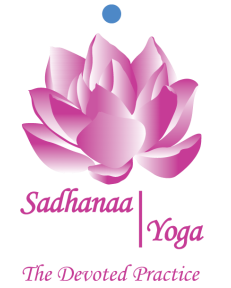|
I see asanas as an artist. The art of sequencing like painting a blank canvas, so many combinations and permutations. And within each asana, through the use of props, there are again so many combinations and permutations....ways of experiencing the richness each pose has to offer. Some people see asanas as physical manifestations. I see them as ethereal. Some people see asanas through the muscles, bones and joints. I mostly see them as painting an awakening. While I understand the importance of anatomy and physiology, I cannot help but view asanas as swirls of colors dancing and melding together.
There are so many different shapes the body can create through an asana. A most common one is the letter 'L'! For example: Ardha Uttanasana, Dandasana, Urdhva Hasta Dandasana, Urdhva Prasarita Padasana, concave back Uttanasana, concave back Padangushtasana, Ardha Halasana, Paripoorna Navasana, Ardha Sirsasana, Ardha Adho Mukha Vrksasana Why is this L shape is so important? And why does it keep reappearing in so many of the asanas? Because through the L shapes our bodies become more in tune and start to readjust the bad postural habits we may have accumulated. There is a strong lifting action created in the torso, we begin to understand the length of our spine and the line of our sides, we begin to understand what the action of the legs do and what their inaction does not do. We begin to understand what is the foundation and although the shape remains the same what actions change or remain the same. Unbeknownst to us the magical letter L starts to transform and re-shape our dull bodies to ones with purpose, strength, and in fact greater flexibility. This magical letter L that reappears can save people from problems of the digestive system- indigestion and acidity to name a few. L shaped asanas also aide in strengthening the core. So many magical things can be seen and uncovered in the world of asanas. There is a beauty to Guruji's work that creates a strong foundation from the beginning through asanas and sequencing. As he said, "Yoga is an art, a science, a philosophy" . It is a kaleidoscopic journey through true beauty.
0 Comments
I just read an excellent article on therapeutics and what it means in Iyengar yoga. Stephanie Quirk is an Iyengar yoga therapeutics instructor. She has been observing and working with the Iyengars in Pune since 1994. The wealth of knowledge she has amassed since her time there, and of course her time spent in Pune is enviable to say the least. What really stood out to me in her article was that often times therapeutic yoga is equated with restive or restorative poses. This should not necessarily be the case! She states:
"When working directly on a patient’s asana, the teacher needs to think of how the patient is able or not able to absorb or tolerate being in the pose. There is no point in taking them to a pose that is too strong, too far for them to reach. The reverse is also true. It is a common misunderstanding that therapy is all about “resting” or restorative poses. There may be fatigue or circulatory problems or mental imbalances that have to be released at the beginning of an asana session, but to allow the patient’s circulatory, nervine, and mental systems to sink into dullness can create more problems." Recently, I had the Divine luck to attend classes with senior teachers from RIMYI. All the teachers from RIMYI- Devkiji, Dr. Rajlaxmiji and Raya seemed to be instructing us to move dynamically and with intention. Part of my takeaway from their teachings reminded me of a saying that Richard, my first teacher, would always tell us in our training. He used to constantly say that Mr. Iyengar would always say, "Do not be DULL". Jokingly, I came up with the acronym WWBKSID. (Side note, I should really get those on a bracelet) It stands for WHAT WOULD BKS IYENGAR DO? He would probably say not to be dull. The dullness with which we do our asanas or even conduct our daily routines must be expunged! I think that alot of times when we are doing restorative poses to calm and quiet the mental fatigue we forget that it is just in the mind. The body can be active and the mind at rest when practicing asanas. As Ms. Quirk aptly states that allowing the patient's circulatory, nervine and mental systems to deplete can create more problems. So DO NOT BE DULL in your practice! Be dynamic! |
Archives
November 2016
Categories
All
|

 RSS Feed
RSS Feed